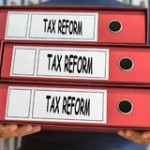
The initial U.S. Senate tax reform bill contained two amendments to the UBIT that would result in additional taxes being imposed on some exempt organizations: the taxation of income from licensing an organization’s name or logo and the prohibition of netting income and losses from multiple trades or businesses. The initial Senate bill is discussed here. The U.S. Senate passed a final version of its tax reform bill on December 2, 2017. The final bill omits the change in licensing income but retains the netting restriction.
Sale or Licensing of Exempt Organization’s Name or Logo
Although royalties are generally excluded from the UBIT as passive income, the initial Senate bill proposed to tax royalty income from the licensing of an exempt organization’s name or logo to a for-profit company. The final bill omits the name and logo licensing provision and allows such licensing income to be excluded as royalty income.
This change comes as particularly good news to colleges and universities, which derive considerable royalty income from the sale of apparel and other items displaying their names and logos.
UBTI of Multiple Unrelated Trades or Businesses Separately Computed
The final Senate tax bill retains the provision that prevents an exempt organization from netting income and losses of multiple trades or businesses. If, for example, an exempt organization conducts Unrelated Business A for a profit and incurs a loss in Unrelated Business B, the present law would allow the organization to net the income and loss. The loss from Business B would reduce the UBIT payable on the income from Business A. Under the Senate proposal, the organization would report UBTI from Business A and would deduct the loss from Business B in accordance with the net operating loss rules.
The anti-netting provision would only affect organizations that carry on two or more unrelated trades or businesses. As a reminder, the IRS may treat what would normally be considered a single trade or business as multiple trades or businesses for purposes of the UBIT. For example, a museum’s gift shop would ordinarily be regarded as a single trade or business. For purposes of the UBIT, however, the IRS may treat the sales of different items as different trades or businesses. For example, assume that an art museum sells art books and history books in its gift store. The IRS would treat the sale of art books as a related business, but the sale of history books would likely be considered an unrelated business. The sale of apparel and toys would also be evaluated as separate trades or businesses. Under the Senate proposal, the museum could not offset a profit from the unrelated business of selling history books with a loss from the unrelated business of selling toys.
Next Steps
Because there are significant differences between the tax reform bills passed by the House and Senate, it is likely that a reconciliation procedure will be used to come up with a bill that can be passed by both bodies and signed by the president. If the bill becomes law before the end of the year, the provisions affecting the UBIT will take effect for tax years beginning in 2018.
